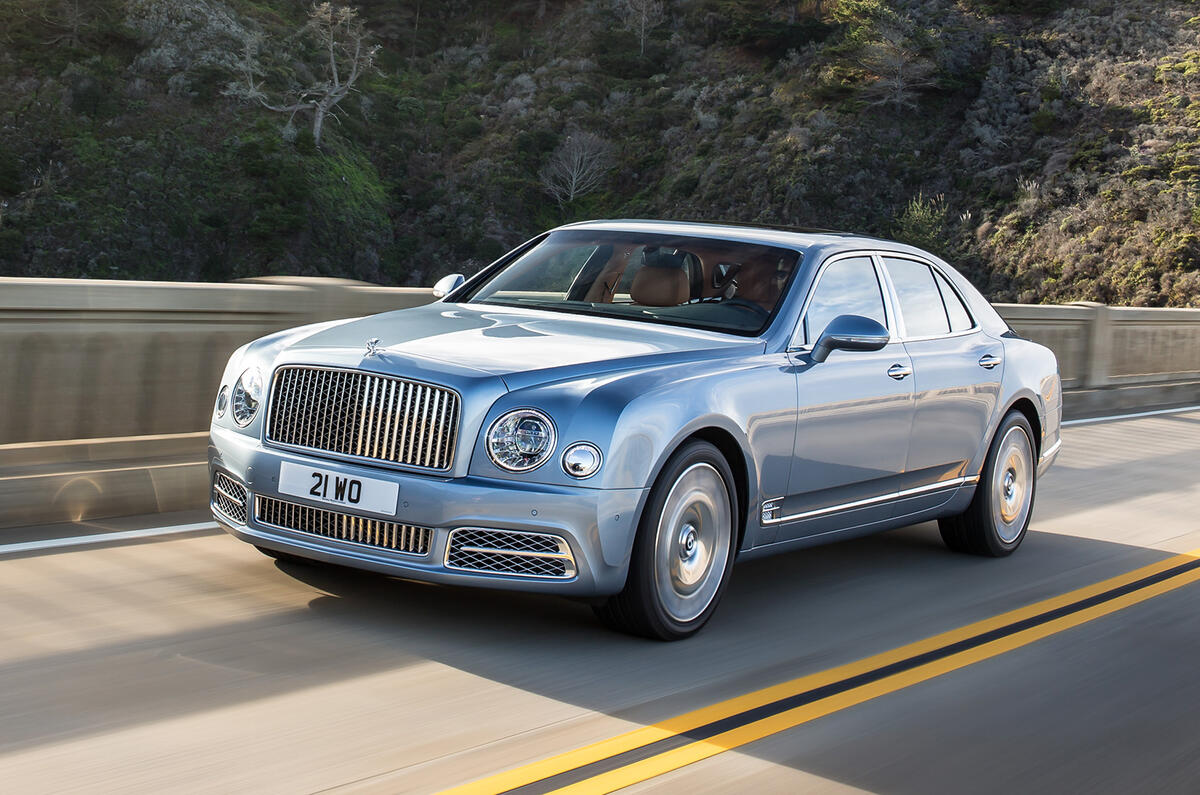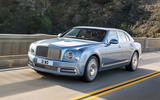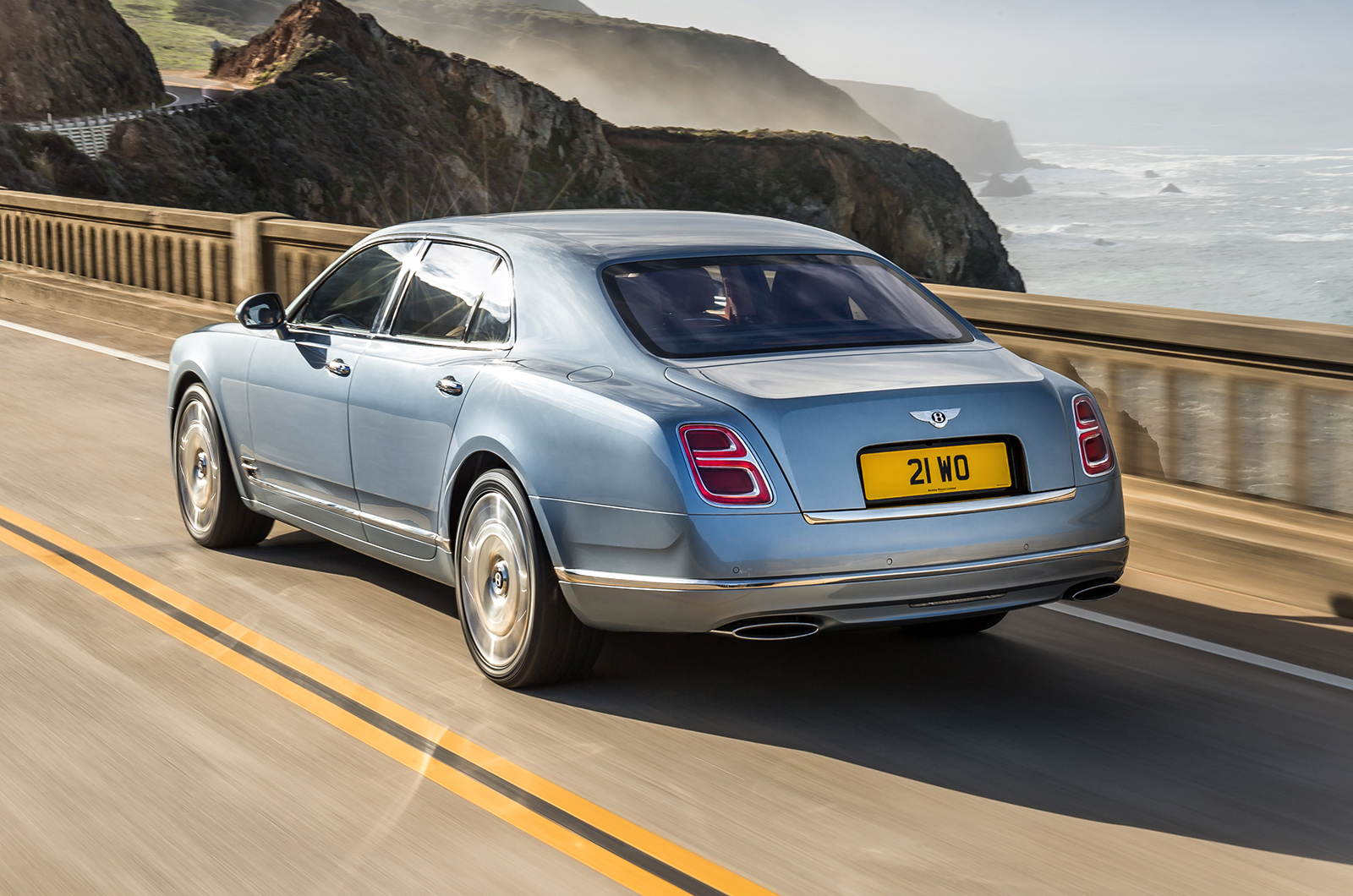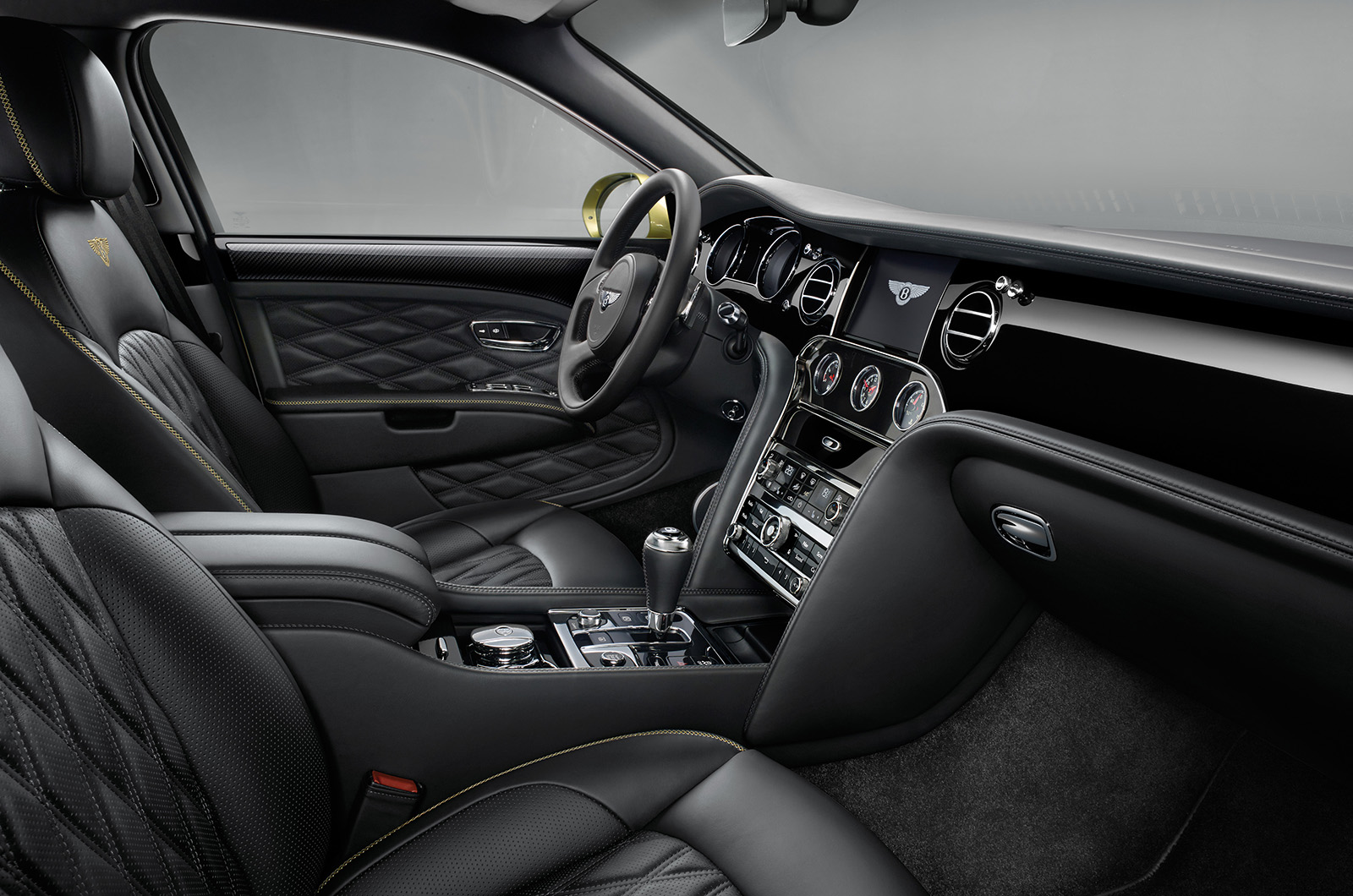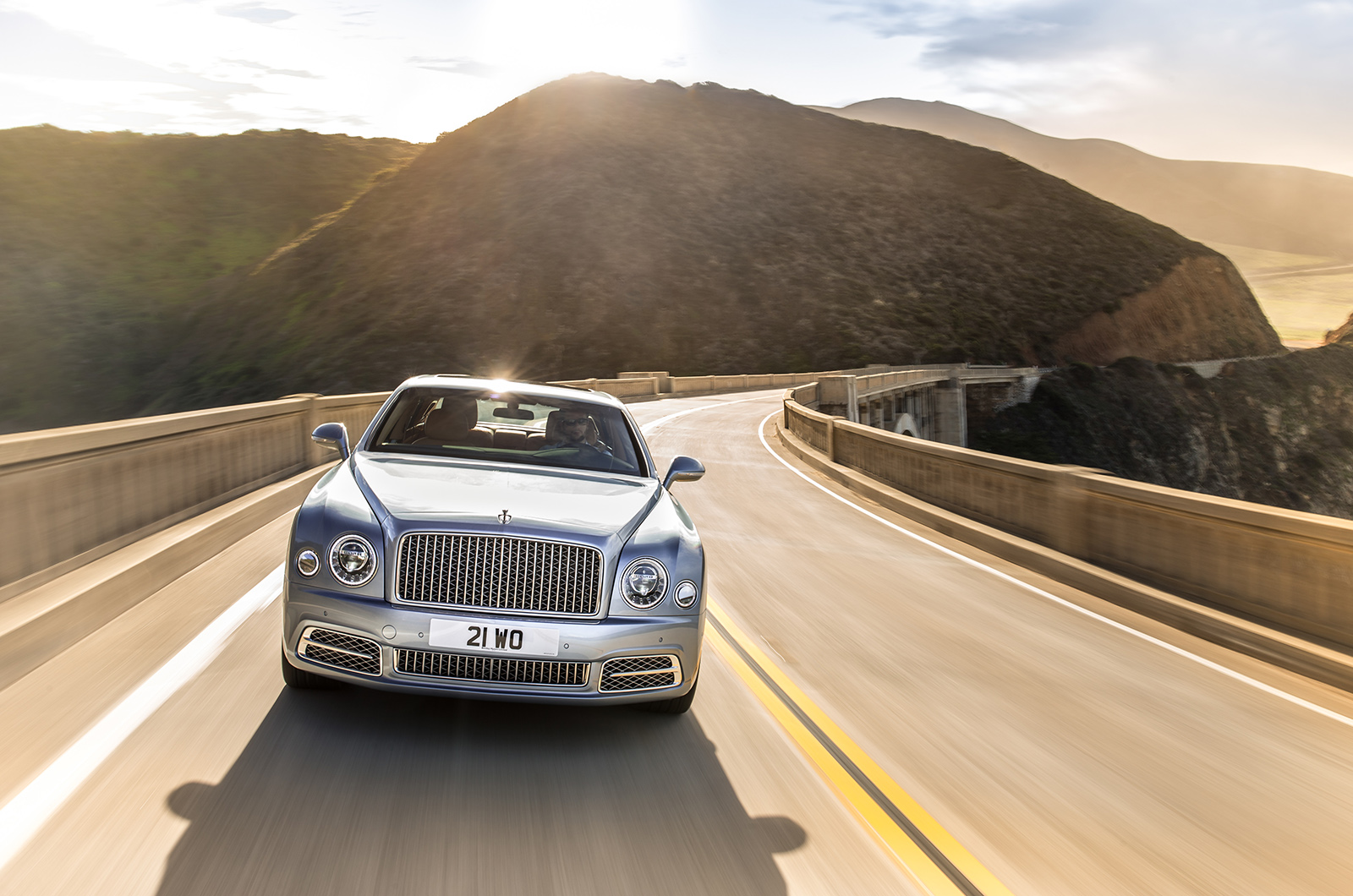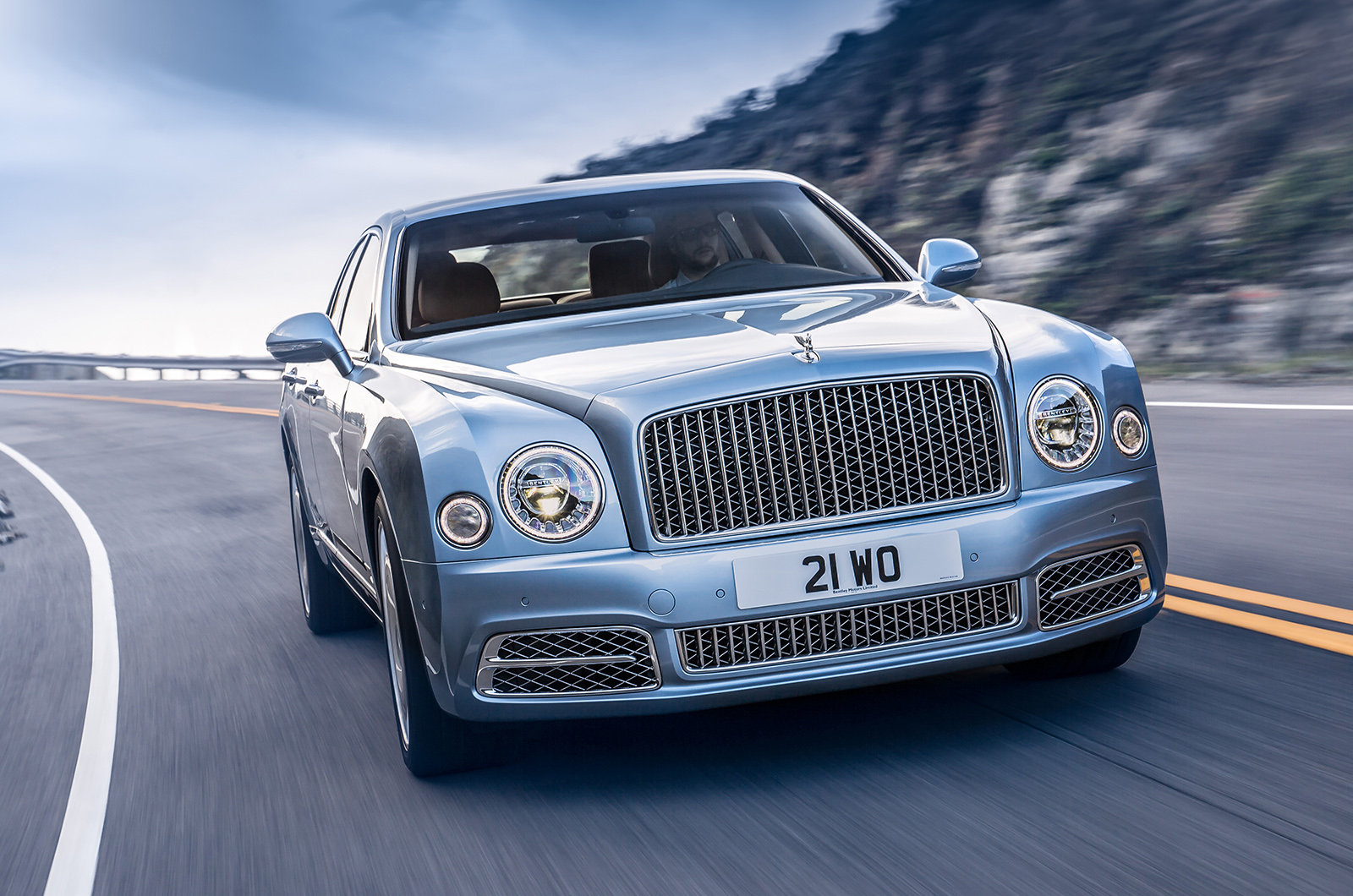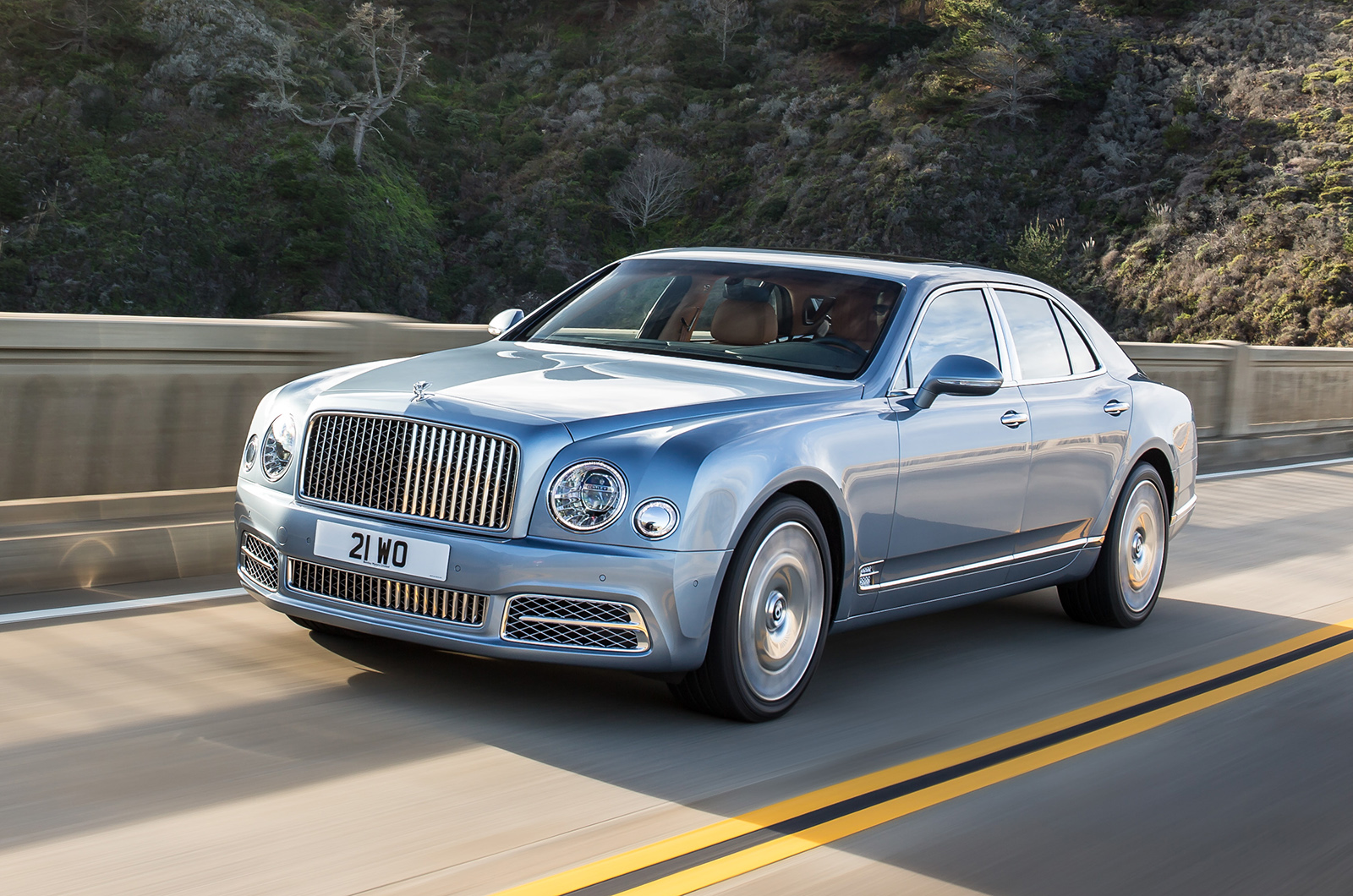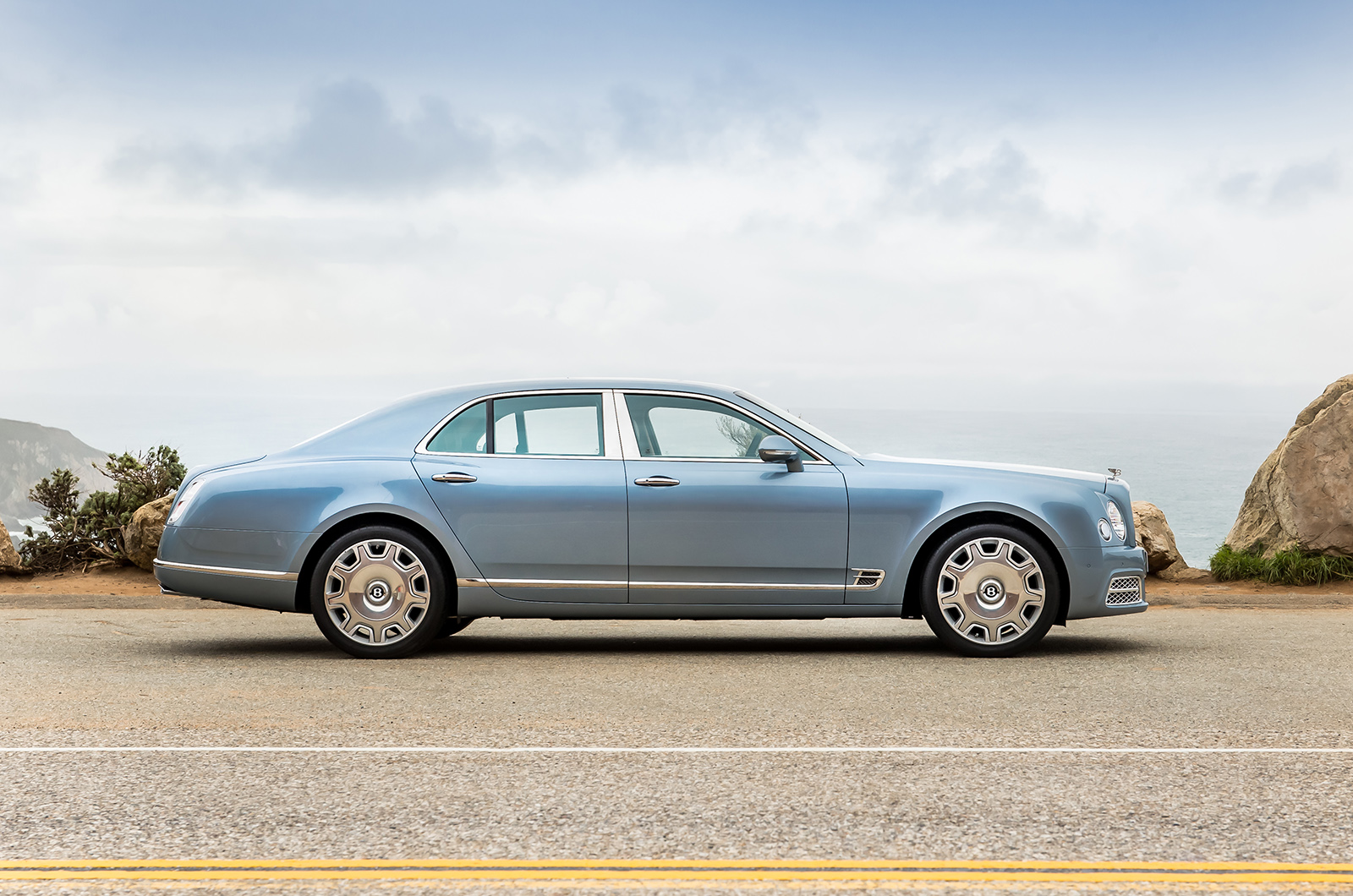Near the top of the centre console, underneath an eight-inch satellite navigation screen that motors almost noiselessly out from behind a veneered door, you’ll find the Mulsanne’s iPod connector. Hidden in a leather-lined, chrome-edged drawer, it’s the perfect microcosmic representation of this car’s mission statement: to deliver the very latest technology, and last word in comfort, to the Bentley customer, in a rich, elegant and unprecedented style.
The profusion of expensive-looking leathers, metals and veneers in this car’s cabin creates an ambience not just of real sumptuousness but of genuine warmth, too.
Other limousines might approach the Mulsanne’s spaciousness and interior specification, but few produce the same air of relaxed, informal luxury. The driver sits in a tall chair that’s comfortable and supportive, and adjusts in 12 directions. A fairly large steering wheel presents itself ahead, with a veneer rim that’s easily adjusted to your preferred position.
The fascia in front of you is clad in glossy wood, surrounded on all sides by soft leather and punctuated by polished stainless steel fittings. There’s no Breitling clock, as in previous Bentleys, but the usual organ-stop ventilation controls are present.
Having criticised the Rolls-Royce Ghost for cabin componentry carried over from a BMW 7 Series, we must praise the Mulsanne both for the uniqueness of its interior fittings and for the tactile material quality on show. Even the smallest rotary knob on the centre console, which adjusts the volume on the 14-speaker audio system, is breathtaking.
The opulent luxury in the rear cabin is just as impressive. Eight-way adjustable heated seats are standard, and they grant a maximum of 1050mm of legroom and 940mm of headroom. That’s more legroom than you get in either a Mercedes-Benz S-Class or an Audi A8. In fact, rear headroom is within 50mm of a Range Rover’s.
The overall equipment level of the Mulsanne was increased in 2013's overhaul with three new specification packages. The Comfort spec included new headrests, adjustable lateral wings, footrests and loose duck down pillows. Upgrade to the Premiere and you get some lovely ambient interior lighting, rear view camera, climate control and massaging front seats, and veneer iPod drawer, while the Entertainment spec adds picnic tables, 8in screens in the headrests, DVD player, 20GB hard drive and Bluetooth headphones.
The 2016 facelift saw numerous additions to the interior, with the addition of a new 8.0in touchscreen infotainment system equipped with sat nav, a 60GB hard drive and Apple CarPlay, Android Auto and MirrorLink. There is the option for owners to include a 19 channel Naim audio system adn 2200 watt amplifier and super tweeters.
Other changes include a new stability control system, a blind spot monitoring system and automatically adjusting headlights, new seats and trim, and glass switchgear.


